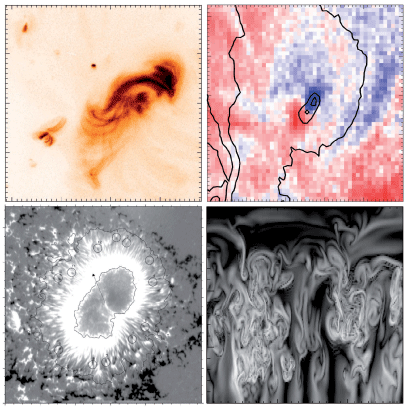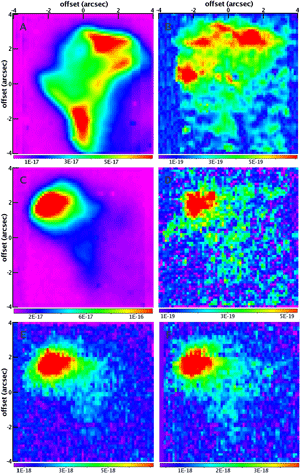Highlights - Volume 481-1 (April I 2008)
- Details
- Published on 18 March 2008
| HIGHLIGHTS: this week in A&A |
Volume 481-1 (April I 2008)
|
A&A Special Letter Feature
Science with Hinode Table of contents In September 2006 the solar space observatory Hinode (Japanese for sunrise) was launched. The project is led by the Japan Aerospace Exploration Agency (JAXA) together with the National Astronomical Observatory of Japan (NAOJ) and contributions from the United States and the United Kingdom. The European Space Agency (ESA) is providing ground station coverage through the Svalbard Satellite Station in Norway. The Hinode satellite carries a solar optical telescope (SOT), a X-ray telescope (XRT), and an EUV imaging spectrometer (EIS). Together, these permit an investigation of the interior of the Sun, and all atmospheric regions, from the photosphere and chromosphere to the corona, addressing the origin of the Sun’s magnetic field, the driving force behind solar eruptive events, and the nature of the hot corona. As a recognition of the impact provided by the new solar observations using HINODE, we publish a “special feature” in this issue. It consists of 18 letters that document these new results. |
|
|
In section 6. Interstellar and circumstellar matter
“Near-infrared, IFU spectroscopy unravels the bow-shock HH99B”, by T. Giannini et al., A&A 481, p. 123 This is a good demonstration of the power of integral field spectroscopy for the study of Herbig-Haro objects. In this study of HH99B at the ESO VLT using SINFONI, one sees clearly that the ionic species like FeII outline the "head" of the bow, whereas molecular hydrogen emission is seen in the flanks. A rather surprising result is the high (80 km/s) value inferred for the H2 breakdown shock speed, which is higher than most (though not all) theoretical estimates. |
|
© Astronomy & Astrophysics 2008




